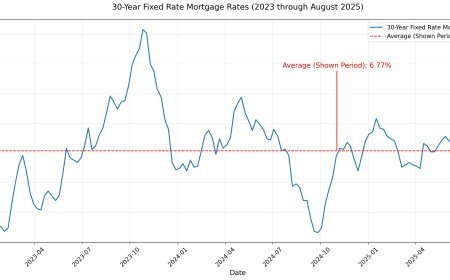REITs vs. Direct Property Ownership: Which Real Estate Investment Strategy Offers Better Returns?
Compare Real Estate Investment Trusts to direct property ownership with detailed ROI analysis to determine the best real estate investment strategy.

Real estate investing is a proven way to build wealth, offering income, appreciation, and diversification. The two main strategies are Real Estate Investment Trusts (REITs) and direct property ownership, such as rental properties. Each has distinct benefits, costs, and risks. This article compares REITs and direct property ownership with real-world data to help you choose the best approach for your goals.
What Are REITs?
Real Estate Investment Trusts (REITs) are companies that own, operate, or finance income-producing properties, like apartments, malls, or offices. They pool investor money to buy diverse real estate portfolios, making them ideal for those seeking passive investment. REITs trade on stock exchanges, offering accessibility and flexibility.
REITs provide instant diversification across many properties and sectors, reducing risk compared to owning a single property. For example, a REIT like Simon Property Group owns shopping malls nationwide, spreading exposure across markets. Professional management handles all operations, from leasing to maintenance, saving investors time. REITs are highly liquid, allowing daily buying or selling, unlike physical properties, which can take months to sell. They must distribute at least 90% of taxable income as dividends, yielding 3-6% annually. Historical total returns, including price appreciation, average 8-12% per year, per the National Association of REITs (NAREIT).
Costs include expense ratios, typically 0.1-0.75% annually, like the Vanguard Real Estate ETF (VNQ) at 0.12%. Brokerage commissions are often $0 with modern platforms, but dividends are taxed as ordinary income, and capital gains taxes apply when selling shares, reducing net returns.
Direct Property Ownership Explained
Direct property ownership involves buying physical real estate, such as single-family homes or multi-family units, usually for rental income and appreciation. This hands-on approach suits investors who want control and are comfortable with active management.
Owning rental properties offers direct control over decisions like property selection, rental rates, and tenant screening. Using a mortgage, investors can leverage their capital for higher returns. For example, a 20% down payment on a $400,000 property controls a $400,000 asset, with income and appreciation based on the full value. Tax benefits include deductions for mortgage interest, property taxes, insurance, maintenance, and depreciation, which can offset income significantly. Rental properties also hedge against inflation, as rents often rise with living costs. A 3% annual rent increase on a $2,000 monthly lease adds $720 yearly.
Costs include a 20-25% down payment, closing costs (2-3% of the purchase price), and ongoing expenses like maintenance, property taxes, insurance, and property management fees (8-12% of rent). A $400,000 property might incur $8,000 in annual expenses. Vacancy periods, averaging 7% in the U.S., reduce income, and selling a property involves high transaction costs and time.
Comparing Returns
Consider a $100,000 investment in each strategy over one year. For REITs, $100,000 in a fund like VNQ with an 8% return (5% dividends + 3% appreciation) generates $8,000. After a 0.12% expense ratio ($120) and 24% federal tax on dividends ($1,200), the net return is about $6,680. This requires minimal effort.
For a rental property, a $100,000 down payment on a $400,000 property generates $24,000 in annual rent ($2,000 monthly). After expenses—$4,000 for taxes and insurance, $2,000 for maintenance, $2,000 for property management—net income is $16,000. With 3% appreciation ($12,000), the total return is $28,000, or 28% ROI. Tax deductions, like depreciation, might reduce taxable income, yielding a net return of $20,000-$22,000. However, this assumes stable tenancy and markets, and it demands significant time.
Rental properties offer higher potential returns but require more effort and carry greater risks, like vacancies or repairs.
Time and Effort
REITs are nearly passive. Investors select a REIT or fund, monitor performance occasionally, and reinvest dividends. There are no tenant or maintenance issues. Rental properties, however, require active involvement: selecting and financing properties, screening tenants, managing leases, and coordinating repairs. Hiring a property manager reduces the burden but cuts profits by 8-12% of rent. REITs suit busy professionals or those seeking simplicity, while rental properties appeal to hands-on investors with real estate expertise.
Risk Factors
REITs face stock market volatility, with prices fluctuating daily. Rising interest rates can increase borrowing costs for REITs, impacting profits. Investors lack control over management decisions, like property acquisitions. Rental properties concentrate risk in one asset, with potential issues like vacancies, problem tenants, or major repairs (e.g., a $10,000 roof replacement). Local market downturns can reduce rent or property value, and properties are illiquid, limiting quick access to capital. REITs spread risk across many assets, while rental properties amplify both rewards and risks.
Tax Considerations
REIT dividends are taxed as ordinary income (up to 37% federally), and capital gains from selling shares face 0-20% taxes, with no major deductions. Rental income is also taxed as ordinary income, but deductions for mortgage interest, taxes, insurance, maintenance, and depreciation can significantly lower tax liability. For a $400,000 property, depreciation might yield $16,000 in annual deductions, shielding income. Rental properties often provide better tax benefits, especially for high-income investors.
Choosing the Right Strategy
REITs are ideal for those seeking passive income, diversification, liquidity, and minimal time commitment. They’re great for beginners or investors with limited capital. Rental properties suit those wanting higher returns, control, and tax advantages, provided they’re comfortable with active management. Many investors blend both: for example, $50,000 in REITs for diversification and $50,000 as a down payment on a rental property for higher returns.
Conclusion
REITs and direct property ownership both offer compelling paths to real estate wealth. REITs deliver 8-12% annual returns with ease and diversification, while rental properties can yield 20%+ in strong markets with tax benefits but require time and risk tolerance. By evaluating your goals, time, and risk appetite, you can select the strategy—or combination—that best fits your financial journey.
What's Your Reaction?
 Like
0
Like
0
 Dislike
0
Dislike
0
 Love
0
Love
0
 Funny
0
Funny
0
 Angry
0
Angry
0
 Sad
0
Sad
0
 Wow
0
Wow
0













































